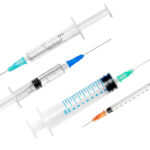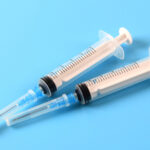Research suggests a two-dose covid vaccine into the same arm results in greater immunogenicity than when given in different arms.
Same arm or different arm: does it matter which arm your second vaccine shot goes in?
Largely thought not to matter, a recent study published in eBioMedicine suggests otherwise.
Researchers in Germany found that injecting the second dose of the Cominarty (BioNTech/Pfizer) covid vaccine into the same arm (ipsilateral) as the first dose resulted in greater spike-specific neutralising antibody activity and a higher spike-specific CD8 T-cell response than when using the other arm (contralateral).
“Despite large interindividual variability in specific antibody- and T-cell responses within each group, the lower neutralising antibody activity and strikingly lower levels of specific CD8 T-cells after contralateral vaccination may have implications for protection on a population level and support current preference for ipsilateral administration,” wrote the authors, led by medical scientist Laura Zeigler of Saarland University in Homburg.
“Moreover, the findings of this study can immediately be translated into clinical practice without additional costs or adverse events, and may have general relevance for other vaccines applied as a dual-dose regimen.”
The study, which took place during the roll out of the vaccination program in Germany, included around 300 participants who had not been infected with covid.
Six weeks after the first dose, half were randomised to receive the second vaccine dose in the same arm as the first, and the other half had the second dose in the different arm.
Blood samples were taken two weeks after the second dose. There was no significant difference in antibody levels between the two groups, but the difference in median neutralising antibody activity was statistically significant, at 65% for the contralateral group vs 69% for the ipsilateral group.
Covid spike-specific CD4 T-cells were similar in both groups, but CD8 T-cells – the so-called killer T cells – were significantly higher in the ipsilateral group, with 67% having detectable levels vs 43% in the contralateral group.
The authors speculated that the differences in immunogenicity could be due to the priming and secondary boosting of the same axillary lymph nodes, with limited involvement of those on the other side.
This was supported by post-vaccine imaging studies showing that ipsilateral lymph nodes were larger and showed higher metabolic activity compared with the contralateral lymph nodes.
“Both ipsilateral and contralateral vaccination induce a strong immune response, but secondary boosting is more pronounced when choosing vaccine administration-routes that allows for drainage by the same lymph nodes used for priming,” the authors wrote.
It’s unclear whether these findings have implications for sequential vaccinations other than covid, the study authors said in a statement, adding that further work was required. In the meantime, the authors noted that among other factors known to affect covid vaccine immunogenicity, including type of vaccine, interval between doses, age of recipient and immunodeficiency status, vaccine side can now be added to the list.




